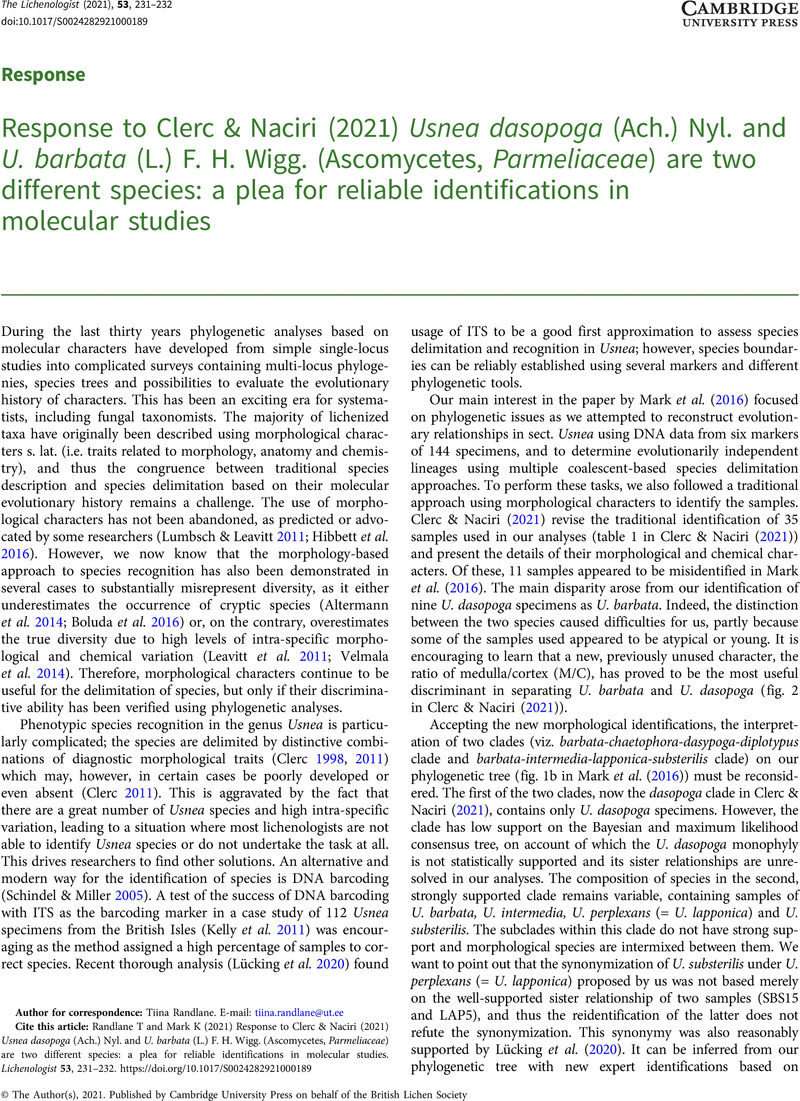Crossref Citations
This article has been cited by the following publications. This list is generated based on data provided by Crossref.
Myllys, Leena
Pino-Bodas, Raquel
Velmala, Saara
Wang, Li-Song
and
Goward, Trevor
2023.
Multi-locus phylogeny of Bryoria reveals recent diversification and unexpected diversity in section Divaricatae.
The Lichenologist,
Vol. 55,
Issue. 6,
p.
497.






